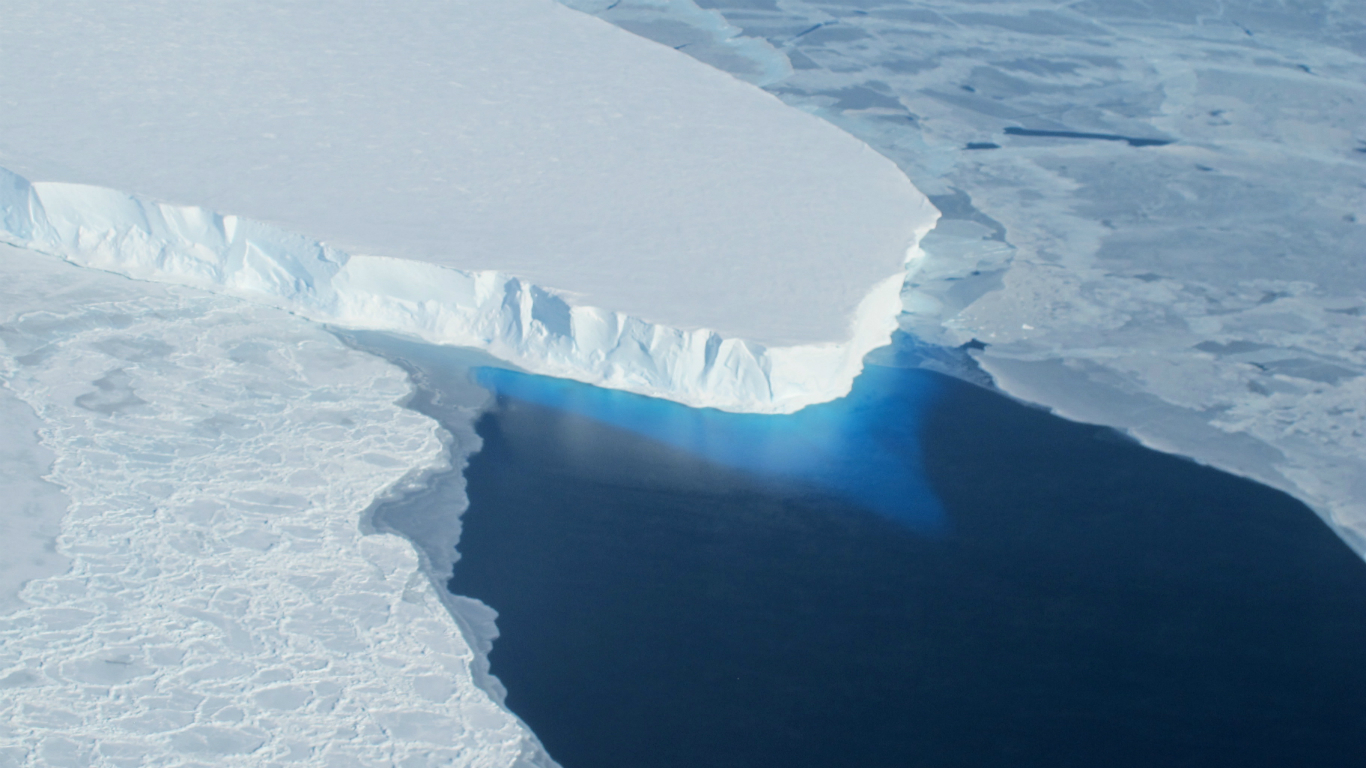News
Earth’s Most Dangerous Glacier Is Melting, and It Could Drown Major Cities Around the World

Published:
Last Updated:

We tend to think of glaciers as huge, extremely frozen, and very slow-moving. But the Thwaites Glacier in Antarctica, which has been called both “terrifying” and “the world’s most dangerous” glacier,” is going rogue — and if it continues to melt at the current rate, some of the world’s greatest cities are in danger of eventual inundation.
The glacier, which juts into the Amundsen Sea, 800 miles or so west of McMurdo, and extends deep into the interior of Antarctica, is as big as the state of Florida. Its front end measures 100 miles across, and at its deepest point is between 3,000 and more than 4,000 feet deep. It’s composed of more than 50 times the amount of ice contained in all the mountain glaciers in the world.
In February, NASA scientists using satellite imaging discovered a hole said to be two-thirds the size of Manhattan at the bottom of the glacier. It once held 14 billion tons of ice, most of which has melted away in the past three years. Global warming is putting some of the world’s most famous glaciers, as well as popular tourist destinations, at risk of disappearing — these are the attractions that are being destroyed by climate change.
Antarctic ice is melting six times faster than it did 30 years ago. According to a paper on marine ice sheet instability just published in the Proceedings of the National Academy of Sciences of the United States of America, “The potential for collapse of the Antarctic ice sheet remains the largest single source of uncertainty in projections of future sea-level rise.”
The entire Thwaites Glacier could melt over the course of the next 150 years, and the entire ice mass could conceivably melt away. This would cause a “catastrophic” rise in sea levels around the world. Among the cities most at risk for inundation are London, Shanghai, Houston, Jakarta, Manila, Bangkok, Lagos (Nigeria), and the Bangladeshi capital of Dhaka.
Houston is not the only American city at risk. Across U.S. coastal cities, hundreds of thousands of homes are facing chronic tidal flooding within just a few years and worse in the long run. These are the American cities that will be largely underwater by 2100.
Thank you for reading! Have some feedback for us?
Contact the 24/7 Wall St. editorial team.